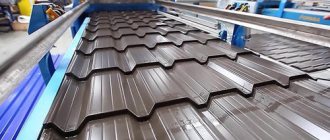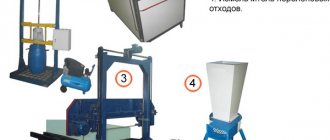We decided to end this year as productively as possible and, on the eve of the holidays, raise a difficult but interesting topic - how to calculate the cost of a knitted product so that a hobby turns into a business and brings not only joy, but also good income. We talked with the masters of our portal, and they honestly told us all the secrets and mysteries of their calculations. We hope that the approaching winter holidays will provide time for a detailed study of our article. Happy reading and useful conclusions!
What do we offer ?
Our company specializes in the production of high-quality knitted products of any complexity according to individual orders. Hats, scarves, blankets, knitted corporate gift and promotional items and souvenirs. We provide a full range of services: from idea and development of design layouts, to production and packaging of finished products
We use Italian, Turkish and Russian yarn. The highest quality materials: acrylic, viscose, wool blend, bamboo, cotton, velor, angora, mohair and vezuv
Checkout
Own production
Providing an exclusive product of any volume and complexity. We complete it on time and in accordance with the customer’s wishes. The company has developed an effective control system, which involves involving employees in a multi-stage check of previous stages of work
Long-term cooperation
We evaluate our work not only by business indicators, but also by how often our customers turn to us again. We do not strive for one-time transactions. We create strong relationships with our clients
Newest technologies
We consistently monitor and implement innovative developments in production: hats, scarves, blankets, knitted corporate gift and promotional items and souvenirs
Product Catalog
How do you calculate the price of knitted items? What does it consist of?
Olga Boldyreva: It’s very simple. After the work is ready, I count the yarn consumption in meters and multiply by 3.5 rubles if this work is done with crochet and 5 rubles if on knitting needles, and add the cost of the yarn itself. Let’s say it took 2,000 meters * 3.5 + 800 rubles = 7,800 rubles for the cost of the finished work to make a simple crocheted dress. Another example: the work was done with knitting needles and in two threads, and the consumption was 3,500 meters, then the calculation will change slightly: 3,500 meters * 5/2 +1,000 rubles = 9,750 rubles. I divide by 2 because the product is knitted in 2 threads.
Vera Shevchenko: There is no specific formula, at first I used calculations of the cost of knitting, which I found on the Internet: based on the cost of a meter of yarn. Now I’m calculating the price based on my requests and the income level of my target audience. The price includes the idea, the cost of yarn, and work. Does not include the cost of packaging (I buy in bulk at a favorable price), electricity costs, etc.
Ekaterina Yepik: The price consists of the cost of yarn, its consumption, as well as the complexity and size of the product.
Irina Pugach: The price of the product consists of the cost of the material + the cost of work and, which is mandatory, + a premium of at least 70%. This margin includes all store fees, incidental expenses and force majeure risks.
Olga Fomina: Previously, I relied on tables that are available on the Internet. I get a coefficient of 3–4 rubles per meter of yarn, + the cost of yarn and other materials, the possibility of a discount (10–15%).
Elena Vyatkina: I set the cost of the work for myself. For example, in a month I can complete two jobs of appropriate complexity, for example, two hand-knitted sweaters. How much should I earn per month? Well, approximately 20,000 rubles. This means that the work for the sweater should cost me 10,000 rubles. Or I have to make three sweaters a month. Then the work for the sweater will cost 6,600 rubles.
I calculate how much yarn will go into the corresponding sweater. For example, ten skeins, 300 rubles each. Total 3,000 rubles. The cost of a sweater for a client will be 13,000 rubles or, accordingly, 9,600 rubles.
The cost of the work includes:
- sketch of the model - all my models are original, developed by me, not from magazines;
- model development - accurate calculations, patterns;
- selection of yarn - not every yarn will make the model look decent and modern;
- purchasing yarn - risks regarding the quality of raw materials, I buy samples at my own expense, but the quality may not be satisfactory;
- production of an experimental, pilot sample;
- making the sweater itself;
- photo costs for the store - model, makeup, photographer, studio;
- expenses for advertising activities and payment for the store.
Maria Gromova: Over time, my method has undergone tremendous changes. I started to earn at least something, the price was based on a small increase in the cost of the yarn. After working like this for several seasons and finally looking at my tax return, I realized that I was working not just at zero, but actually at a loss, because my health was not getting better, the workload was enormous, and the financial compensation was very small. I didn’t know how to manage my time, take care of myself, my health, have quality and proper rest, but I worked 24/7 and all by myself, by myself. But after going through a rather difficult period in my life, I realized that if I didn’t change my approach to business, I would be overwhelmed with the rubble of my business.
I worked very hard on my self-esteem, accepting my worth, finding my footing, and realized that as much as I value myself, my clients value my work. If I neglect myself, underestimate my talent, my capabilities, the quality of my work, then my clients begin to do the same. From that moment on, I radically changed my internal attitudes and began to apply this in my business. I calculated the amount I would like to receive per month and the number of hours I can spend per week directly on the knitting process. Then I calculated the cost of an hour of work and determined the price of my products, adding profit and other costs - taxes, store maintenance, packaging, depreciation.
If you evaluate your work only from the point of view of what you received as a performer, but do not include profit there, then it turns out that you work in a factory, continuing to live from paycheck to paycheck - from order to order. You don’t have the opportunity to expand your business, you don’t have the opportunity to make it more efficient, improve the quality of your products, or build a personal brand. You cannot do this, because there are no extra funds for this, and funds can only appear from the part that we pledge as the entrepreneur’s profit. Your personal, what you receive as a performer, if other people do not work for you, you must spend on maintaining your health, everyday life, and a joyful life.
I know that it gives me pleasure to work with high-quality yarn, in a rhythm that is comfortable for me, at first I was very scared that I would be left without work. But the most amazing thing is that when I decided to make these changes, absolutely amazing amazing people who value and respect handmade began to come to me.
Larisa Snykhovskaya: Cost of materials + cost of work (yardage of yarn * price of work per 1 meter of knitted yarn), + cost of assembling the product, + wear and tear of equipment and tools, + costs of washing, wet-heat treatment, electricity, etc. - average amount for one products.
Anna Bogdanova: Price of materials + level of complexity + individuality of the order.
Tatyana Klimenko: The cost of the finished product takes into account: the cost of materials, the cost of their delivery and receipt, the cost of maintaining a store on the website, the labor intensity of the product, the cost of packaging.
Francesca Fiore: The price includes:
- Production - yarn and materials, tools and equipment (their costs must be recouped), creation of sketches, samples and technological descriptions. Here it is important to keep in mind that “creativity” can also be expressed in monetary terms, since it directly depends on the cultural and ideological potential of a person. The richer the personality, the broader the knowledge, the brighter the impressions and life experience, that is, the more invested in a person and his education, the cooler the creative ideas, flights of fancy and the result in the form of models. This also includes labor - the cost of man-hours spent on creating the product. There are different methods of calculation, I came across two: this is the cost of processing a linear meter of yarn, plus coefficients for the complexity of the type of jacquard, the number of weaves, etc. In addition, working with yarn in dark shades is also slightly more expensive (the eyes suffer). Another way to calculate the cost of a job is the average daily rate for an industry in a particular country at a particular time. Manual labor is still used in light industry, so there are standards. For example, in the ABC state, a seamstress/knitter receives on average Z money for a ten-hour working day, while performing N amount of work (or meters of yarn, or pieces, etc.).
- Overhead expenses - for electricity, transport/fuel (you have to go to purchases, financial institutions, etc. an infinite number of times), conducting cash transactions, taxes.
- Sales - you need to photograph the finished model (pay for the photographer, studio, model, stylist to create competent images), pay for the store and/or advertising. You need to write competent descriptions, work with clients - correspondence, solve stylistic and “figurative” problems. Someone can do this themselves, if they know how, and spend their time on self-education in all these areas, searching for information on the Internet. Someone spends money on hiring an administrator, stylist, marketer, etc.
- Delivery - Delivery is the responsibility of the seller. It is his task to choose the most reliable and safe method. And there are risks too. Therefore, I believe that these risks should also be included in the price.
- Profit - but this is a personal matter for each master. I can only say what points I would take into account: you can multiply the cost part by at least ten, as long as it sells. That is, “from above” we are limited objectively by competition. If we have created something truly worthwhile, having separated ourselves from other masters by a thousand kilometers, then such a product will sooner or later find an owner. If we overestimated ourselves, the lack of sales will demonstrate this. But according to the restriction “from below” everything is not so simple. I came up with my own formula: the cost should be such that I, as a master, automatically, subconsciously put the client’s interests above my own. In other words, for this money (the specific cost of the model) I am ready to love, in the humanistic sense of the word, to endure, not to be irritated, to search and find the best for the client an infinite number of times, to be ready to admit that I am wrong, etc. And at the same time enjoy it all.
Olga Dolbnina: The price of a knitted product consists of the cost of the material, the number of hours and a percentage premium, which includes payment for the store, advertising, photos, time for developing models, etc.
- as a rule, 10–20%. Elena Popova: After much testing and variation, the following basic price formula was derived: raw materials + labor + 40%. It is impossible to take into account all costs, so this 40% percent includes:
- labels;
- packaging bag;
- fare;
- courier or other delivery of raw materials;
- photography and post-processing;
- account maintenance.
When plans include a discount, gift wrapping with gifts, I add these costs to the base price. As a percentage, this comes out to 20–25%.
How we are working
Acquaintance
Statement of the problem, selection of raw materials. Providing a photograph of the product, layout, drawing or live sample
Price
We are preparing a preliminary commercial offer. We conclude a transparent agreement with an individual or legal entity
Sample
We prepare the knitting fragments. We develop a sample of your product in the desired design and size
Coordination
We approve the reference copy. If necessary, we make adjustments and bring the sample to the desired result.
Launch
We launch the product into production. We deliver circulation within the agreed time frame
Delivery
The final stage is the shipment of the finished edition.
Deliveries in Moscow and the Russian Federation Fill out an application
What unexpected items have been added over time to the price calculation for a knitted product?
Maria Gromova: An unexpected moment for me was the need for a health supplement. I included here the necessary procedures for my eyes, joints, spine - massage, swimming pool, eye drops.
Larisa Snykhovskaya: Costs for untying samples and calculations.
Tatyana Klimenko: When we were beginning craftsmen, we were ready to knit rugs of any size at the same cost, say, per unit area. However, after knitting non-standard products a couple of times, we realized that the labor costs are incommensurable! This was probably the biggest surprise. But this is most likely due to inexperience at the initial stage of sales.
Production
They write about us
Is there a difference between pricing for hand-knitted items and those created by machine?
Vera Shevchenko: I have a knitting machine. The price in any case depends on the complexity of the product. By machine it is faster to knit something that is simple in cut and has a simple pattern. Complex items have to be knitted almost by hand. But I think that hand knitting should cost more
The price in any case depends on the complexity of the product. By machine it is faster to knit something that is simple in cut and has a simple pattern. Complex items have to be knitted almost by hand. But I think that hand knitting should cost more
Irina Pugach: Yes! The process of machine knitting is much faster than hand knitting. The purchase and wear and tear of equipment is included in the cost of the product. It's just that in the case of machine knitting, the price of the issue is measured in money, and in the case of hand knitting - the health of the master.
Olga Fomina: Yes, of course there is. Hand knitting takes much longer than machine knitting. I think that a hand-knitted product should cost more.
Larisa Snykhovskaya: There is a difference in the pricing scheme. For hand knitting, as a rule, I use increasing factors for the complexity of the pattern. When knitting on a machine, I take into account the wear and tear of the equipment. So, for my customers, the difference is not noticeable. Using a knitting machine to reduce the cost of products is a very (!) big illusion, which disappears as soon as you repair this same machine a couple of times. The technology is very expensive and, alas, does not last forever.
Olga Boldyreva: I think there is a difference! Hand knitting requires maximum attention and patience. Each loop knitted by a master is a piece of the soul. I agree that the machine knits thinner and faster, but the selection of ready-made knitwear in stores is very large, and I don’t think that one machine can compete with industrial production. In addition, a good knitting machine costs a lot of money, and it must first be repaid in order for it to be profitable in the future. Products knitted or crocheted are more voluminous, look expensive and original, and are more pleasant to wear.
Tatyana Klimenko: Of course, labor costs when knitting by machine are much less than when working by hand! And this is very important to consider. When knitting by machine, as a rule, the yarn consumption is significantly less, and the knitting speed is many times higher!
Elena Popova: Interesting question. It all depends on the degree of difficulty. There are some models that take longer to knit by machine than by hand. Will explain. When knitting by hand, you can see the true dimensions of the item you are knitting. On the machine, the fabric is knitted blindly, according to a pre-calculated loop test. You cannot measure the fabric on the machine itself. It is stretched in breadth and lengthened by weights. Even after removing the part from the machine, you need to wait a day for the canvas to acquire its final dimensions. Sometimes it happens that you have to unravel and re-tie because the size is wrong. As a result, it takes a week to knit by hand, and the same week is needed to knit an item by machine.
Reviews from our clients
online store "Style"
We express our sincere gratitude to the team (trikotage.ru) for their professional approach to the implementation of the order for the production of New Year's corporate souvenirs. Our cooperation with left the most favorable impressions. All tasks assigned to the organization were successfully completed, the obligations undertaken by the company under the Agreement were fulfilled in full within the specified period. Thank you very much
Romanova N.A.
General Director of the online store “Style”
Order
Is it worth including the possibility of a discount in the price of a hand-knitted product?
Vera Shevchenko: Upon request. I can afford to make a discount
I can afford to make a discount
Elena Vyatkina: I think not. This is unfair. It turns out that the buyer is being deceived. If a buyer is interested in something exclusive, a small discount is not very important to him. And if the price is high, he understands that he is clearly being deceived in pricing.
Olga Fomina: I think so, yes, it’s worth it. I budget about 10%, but I can actually give a discount even more during the sales season or for regular customers.
Maria Gromova: I don’t think that it is necessary to include the possibility of a discount in the work, because, on the one hand, it is dishonest towards clients to initially sell things at an inflated price, and on the other hand, this is a kind of negative message to oneself: “For I won’t sell at this price, I’ll have to reduce the price.” Immediately indicate the price that you feel is right for this item, and if you have to make a discount, then let it go easily!
Olga Boldyreva: I don’t do that, because the meaning of discounts will become meaningless. A discount is an advertising ploy, a way to attract new customers, and then follows an acquaintance and wonderful cooperation.
Tatyana Klimenko: It seems to me that yes, the possibility of at least a minimal, 5%, discount should be taken into account when determining the cost of the finished product.
Francesca Fiore: Since these are marketing tools, they are financed from profits. In fact, you can use part of your profits to develop your business or to promote sales and marketing. But these expenses cannot be included in the cost of the models; they do not belong to them.
Mass market and industrial production include discounts in prices. The company operates cyclically. New collections should be released every season. At the beginning of the season, new collections “fresh from the runway” are sold at inflated prices to those who can and want to pay for the pleasure of being first for 1-2 months. At the end of the season, the remaining balances are put up for sale, sometimes with discounts of up to 70%. The product needs to be sold urgently, because a new collection is on the way. By the way, discounts of up to 70% are the lot of only a few units of the product line. Successful models, even during the sales season, never fall below 10–15%.
If a handmade model suddenly turns out to be unsuccessful or is not sold for a long time, then you can, of course, at the discretion of the craftsman, quickly sell it for 10–20% of the cost. But this cannot be foreseen at the time of creation. I can thank the client for choosing my boutique and cooperation, solely at the expense of my profit. He gives me a profitable order, I thank him for this with something - a small discount, free delivery or a worthy gift. And just enough so that my feeling of love for the client and satisfaction from work does not suffer. For example, a client bought two things, my total profit is greater; In addition, some costs are saved. I can also give a significant discount on sample models. I trained on them, they are a rare size or something. In this case, everyone is happy too: I worked out the model, and for someone who cannot afford to purchase an elite product at full price, this is a good opportunity to get the item they like.
Olga Dolbnina: Perhaps it’s worth it. Everything is included in my markup.
Elena Popova: The discount must be included.










